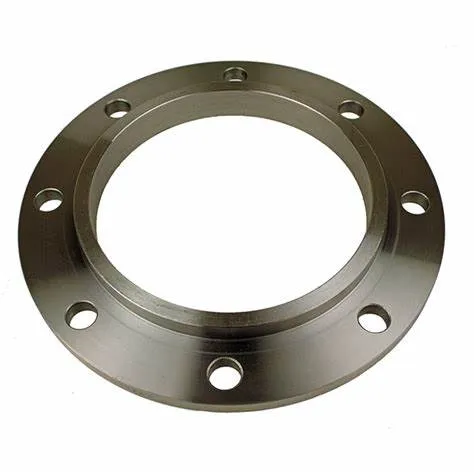-
Cangzhou Yulong Steel Co., Ltd.
-
Phone:
+86 13303177267 -
Email:
admin@ylsteelfittings.com
- English
- Arabic
- Italian
- Spanish
- Portuguese
- German
- kazakh
- Persian
- Greek
- French
- Russian
- Polish
- Thai
- Indonesian
- Vietnamese
- Zulu
- Korean
- Uzbek
- Hindi
- Serbian
- Malay
- Ukrainian
- Gujarati
- Haitian Creole
- hausa
- hawaiian
- Hebrew
- Miao
- Hungarian
- Icelandic
- igbo
- irish
- Japanese
- Javanese
- Kannada
- Khmer
- Rwandese
- Afrikaans
- Albanian
- Amharic
- Armenian
- Azerbaijani
- Basque
- Belarusian
- Bengali
- Bosnian
- Bulgarian
- Catalan
- Cebuano
- China
- China (Taiwan)
- Corsican
- Croatian
- Czech
- Danish
- Esperanto
- Estonian
- Finnish
- Frisian
- Galician
- Georgian
- Kurdish
- Kyrgyz
- Lao
- Latin
- Latvian
- Lithuanian
- Luxembourgish
- Macedonian
- Malgashi
- Malayalam
- Maltese
- Maori
- Marathi
- Mongolian
- Myanmar
- Nepali
- Norwegian
- Norwegian
- Occitan
- Pashto
- Dutch
- Punjabi
- Romanian
- Samoan
- Scottish Gaelic
- Sesotho
- Shona
- Sindhi
- Sinhala
- Slovak
- Slovenian
- Somali
- Sundanese
- Swahili
- Swedish
- Tagalog
- Tajik
- Tamil
- Tatar
- Telugu
- Turkish
- Turkmen
- Urdu
- Uighur
- Welsh
- Bantu
- Yiddish
- Yoruba

Oct . 05, 2024 12:11 Back to list
pipe floor flange
Understanding Pipe Floor Flanges An Essential Component in Piping Systems
In industrial and construction settings, the efficient transfer of fluids and gases is vital for operations to run smoothly. One critical component that facilitates this is the pipe floor flange. A pipe floor flange serves as a connecting element between pipes, allowing for secure connections that can withstand high pressures and various environmental conditions. This article delves into the significance, types, installation procedures, and maintenance of pipe floor flanges.
What is a Pipe Floor Flange?
A pipe floor flange is a flat piece of equipment that is typically circular in shape and serves various functions in piping systems. It is designed to connect pipes or to facilitate the attachment of pipes to other structural elements, such as floors or walls. The flange is generally made from materials such as carbon steel, stainless steel, or plastic, depending on the application and environment it will be exposed to.
Importance of Pipe Floor Flanges
1. Structural Support Pipe floor flanges provide structural support for piping systems, particularly in scenarios where heavy pipes require stability. This is essential to maintain the integrity of the entire system.
2. Leak Prevention Flanges create a tight seal that prevents leaks from occurring at connection points. This is crucial in maintaining pressure and ensuring the safety of the surrounding environment.
3. Ease of Maintenance The design of pipe floor flanges allows for easy disassembly and reassembly of piping systems. This is particularly beneficial during maintenance checks or when system modifications are required.
4. Versatility Pipe floor flanges can be used in various applications, including water supply, gas lines, and even in wastewater management systems. Their versatility makes them an essential component in many industrial settings.
Types of Pipe Floor Flanges
There are several types of floor flanges, each suited for different applications
1. Slip-On Flange This type of flange is designed to slide over the pipe. Once positioned, it is welded in place. Slip-on flanges are easier to align and install, making them popular in many applications.
2. Weld Neck Flange Characterized by a long bevelled neck, this flange is welded to the pipe and provides excellent strength and stress distribution. It is often used in high-pressure applications.
3. Blind Flange As the name suggests, a blind flange is used to close the end of a piping system. It is an essential component for creating dead ends in gas or fluid lines.
pipe floor flange

4. Socket Weld Flange This type features a socket into which the pipe is inserted before being welded. This provides a strong and stable connection, making it suitable for high-pressure systems.
5. Threaded Flange Designed with internal threads, this type can be screwed directly onto the pipe, allowing for easy disconnection. However, it may not be suitable for high-pressure applications.
Installation of Pipe Floor Flanges
Proper installation of pipe floor flanges is crucial to ensure their effectiveness. The steps involved typically include
1. Preparation Before installation, ensure that the pipe ends are clean and free from debris. Properly align the flanges.
2. Positioning Place the flange over the pipe and ensure it is level. For slip-on flanges, slide the flange onto the pipe, aligning it even with the end of the pipe.
3. Welding For welded flanges, carefully weld along the necessary joints, ensuring a tight seal. Follow safety protocols when using welding equipment.
4. Testing After installation, conduct pressure tests to ensure no leaks are present. This step is vital in high-pressure systems.
Maintenance Tips
Regular maintenance of pipe floor flanges can prolong their life. Key practices include
- Visual Inspections Routinely check for signs of corrosion, wear, or leaks. - Re-torque Bolts Periodically check and re-torque bolts to maintain a secure connection. - Cleaning Keep flanges clean from dust, grime, and other contaminants.
Conclusion
In summary, pipe floor flanges are essential components in piping systems, providing structural support, preventing leaks, and allowing for ease of maintenance. Understanding the types, installation processes, and maintenance practices associated with pipe floor flanges ensures that industries can operate efficiently and safely. As technology advances, the development of new materials and designs for flanges may further enhance their reliability and efficiency in various applications.
Latest news
-
ANSI 150P SS304 SO FLANGE
NewsFeb.14,2025
-
ASTM A333GR6 STEEL PIPE
NewsJan.20,2025
-
ANSI B16.5 WELDING NECK FLANGE
NewsJan.15,2026
-
ANSI B16.5 SLIP-ON FLANGE
NewsApr.19,2024
-
SABS 1123 FLANGE
NewsJan.15,2025
-
DIN86044 PLATE FLANGE
NewsApr.19,2024
-
DIN2527 BLIND FLANGE
NewsApr.12,2024
-
JIS B2311 Butt-Welding Fittings LR/SR 45°/90° /180°Seamless/Weld
NewsApr.23,2024











